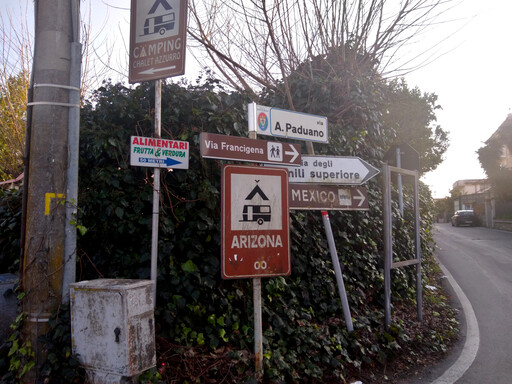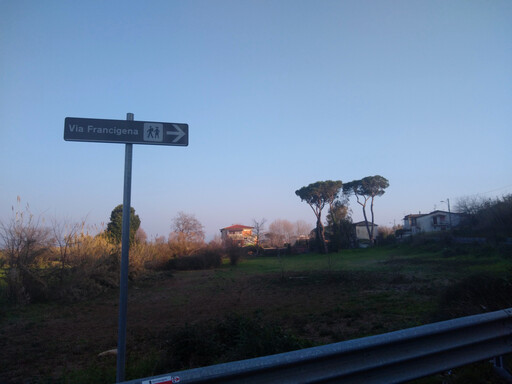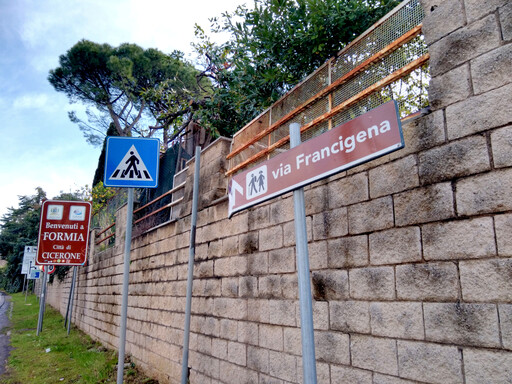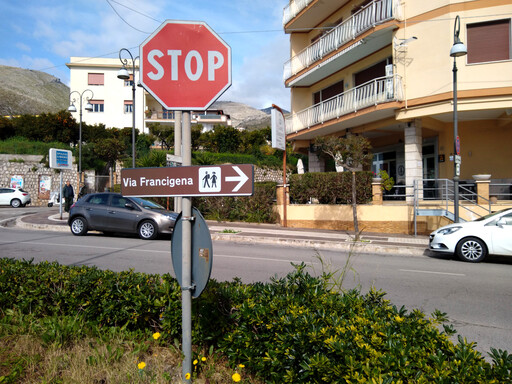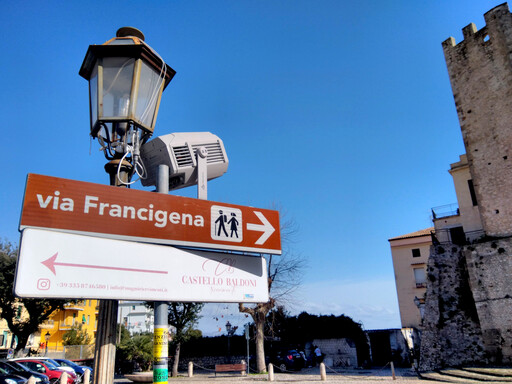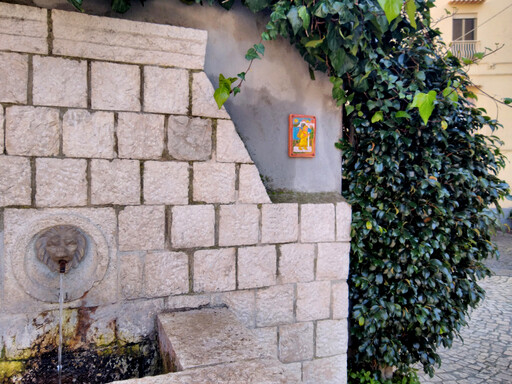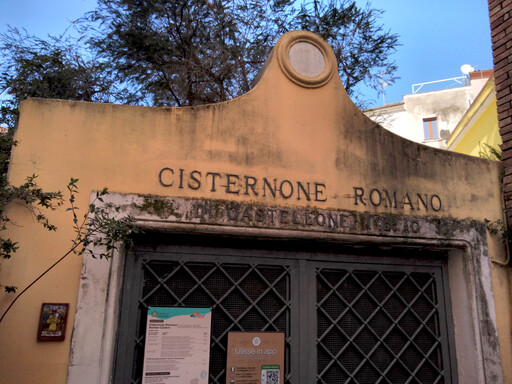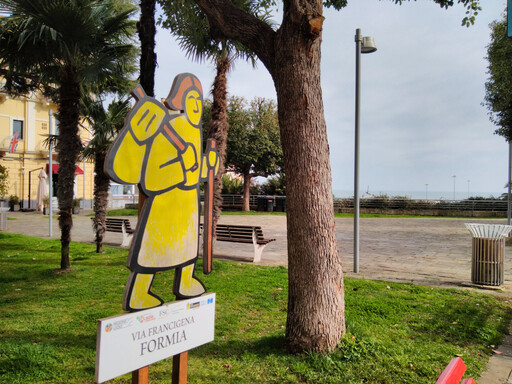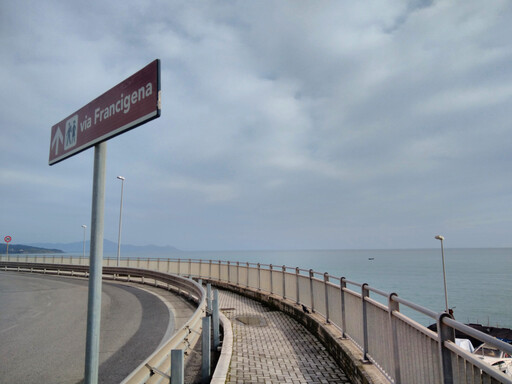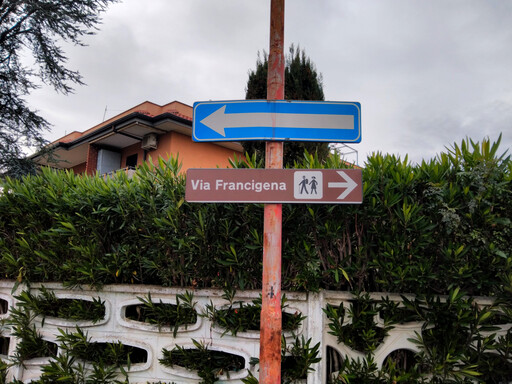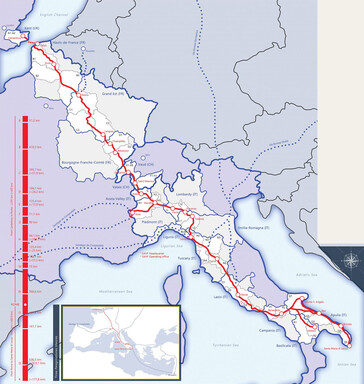Via Francigena
One of the two major early-Mediaeval peregrination routes across Western Europe — the other being, of course, the famous Camino de Santiago, which it predates by a few centuries and to which it is roughly perpendicular. Beginning in Canterbury (specifically, Canterbury Cathedral, seat of the Archbishop of the Church of England), at the southeastern corner of Britain near the Thames estuary, it crosses France, Switzerland, and the entirety of the Italian peninsula, passing through Rome and ending in Santa Maria di Leuca in Puglia, the southeastern end of Italy, after more than three thousand kilometers. From there pilgrims would sail across the Mediterranean to the Holy Land. Thus it connects, together with Camino de Santiago, Compostela, Canterbury, Rome, and Jerusalem, the main peregrination sites of Christianity.
Its southeastern portion in Lazio, departing from Rome, follows the ancient via Appia, the Roman regina viarum, and I had the chance to visit many places on that route during my brief stay there: Gaeta, Formia, Scauri, Minturno (and the archeological site of Minturnae), Santi Cosma e Damiano, Castelforte, and Suio (see those for more, I won't repost the pictures here), after which it crosses the Garigliano river into Campania. The entire path is demarcated by signs directing the way and, more than just the road (although that is itself an attraction), there are endless natural, cultural, and historical wonders along the way.
Maybe one day I'll go for the entire 3268 kilometers.
ὅτι στενὴ ἡ πύλη καὶ τεθλιμμένη ἡ ὁδὸς
ἡ ἀπάγουσα εἰς τὴν ζωήν,
καὶ ὀλίγοι εἰσὶν οἱ εὑρίσκοντες αὐτήν.Quam angusta porta, et arcta via est,
quae ducit ad vitam :
et pauci sunt qui inveniunt eam!Because strait is the gate, and narrow is the way,
which leadeth unto life,
and few there be that find it.

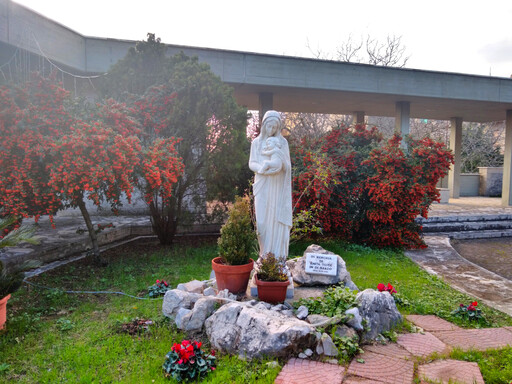

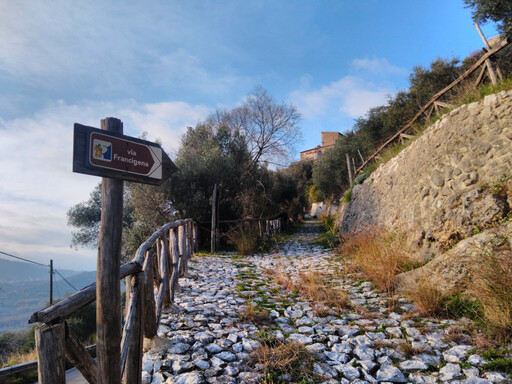



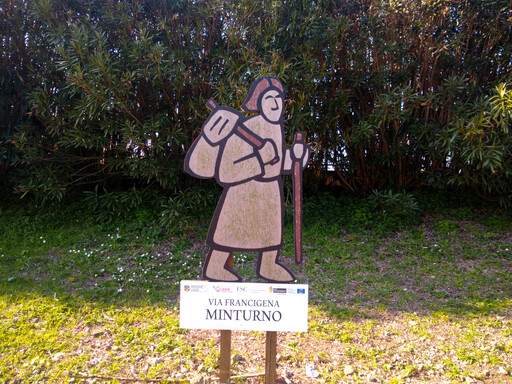

Canterbury: 2.451km
